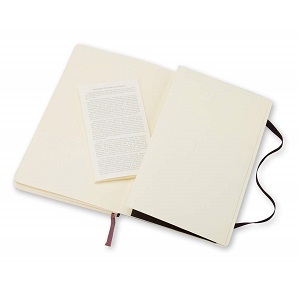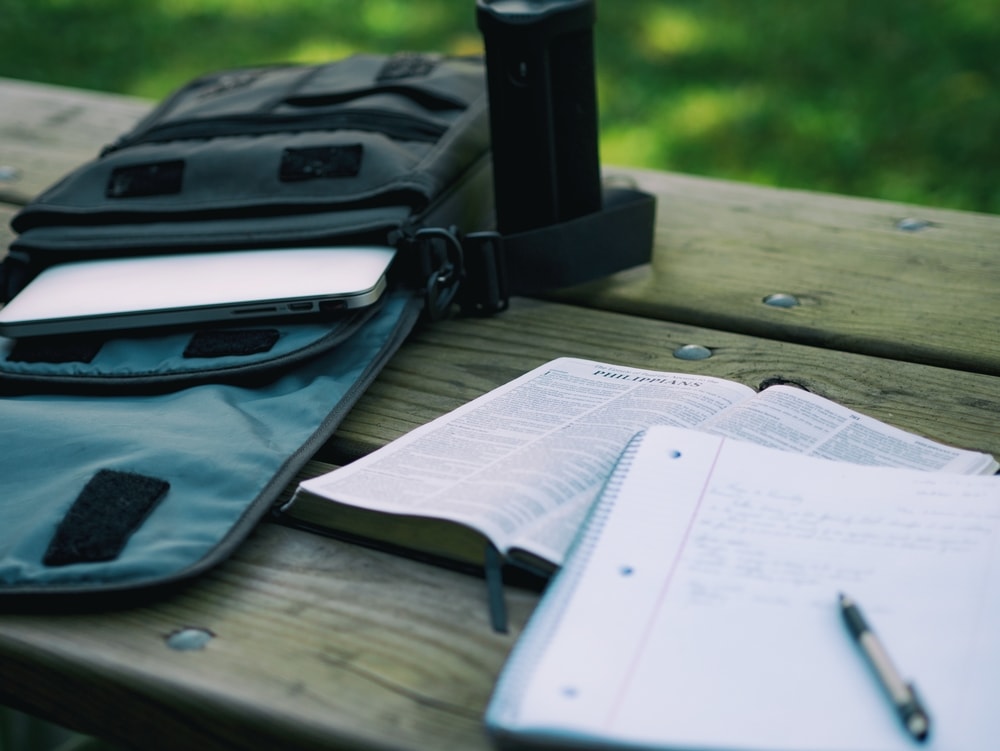It’s 8:00 pm, I’m drinking peppermint tea and sitting by my wood-burning stove in Bishop, California. I scribble in my mini, soft-cover Moleskine notebook—a nightly routine. After writing down what I ate that day, when I ate it, the type of activity I did (climb, run, yoga, core, hangboard, etc.), and details on the activity itself, (duration, number of pitches, intensity, etc.), I’ll reflect a bit on the day itself if there is anything notable to write down.
This is my daily routine and has been so for the past year.

Moleskine serves as a durable notebook to get your journaling started today.
I’m on my second journal now, and if you flip through its pages you’ll find every day is accounted for, as well as a weekly chart of nutrition, activities, and reflections. You’ll find monthly short term goals, long term ones for the season, the year, lists of routes I’ve done or ones I’d like to do, routes I’ve onsighted and ones I’ve red-pointed, how many days on average I climbed per week, per month, what type of climbing it was, my hangboard workouts, any cross-training—analytical reports in between pages of hopes and dreams.
This all started last year, on a sport climbing trip to Spain when I started writing down every route I had climbed as a little record of my trip. It was informal, with just the day and the names of the routes I’d done, but I loved that by the end of the trip, I could see exactly how much climbing I’d accomplished—71 pitches in 11 days of climbing! With an average of 6-8 pitches a day, and could see that I’d built a solid base of 5.10 and even onsighted my first 5.11.
I was starting to take climbing more seriously. I was more interested in training principles, and training in a logical progression. Gone were the days of climbing 2 to 3 pitches and socializing at the crag.
I knew that with a little bit of discipline, it was easy to get in three times as much climbing, build a stronger climbing base over a variety of styles over the seasons, and to accelerate my climbing performance.
I don’t have access to a climbing gym, so all of my climbing is outside on real rock, real routes, and I change locations based on the season and therefore alter my focus and my goals. E.g., long alpine routes of increasing difficulty in the summer, hard crack climbing and big wall climbing in the fall, sport climbing and bouldering in the winter, and splitters in the desert in the spring.
With the use of a journal, my climbing has more structure. I am able to see and create patterns based on my goals, whether it’s climbing more pitches to build endurance, or bouldering to increase my strength. I am able to shift my focus to what’s important to me at the time, to see my progress, and the most useful tool so far, to see what has worked for me before and how I can implement the same methods for the next goal.
I write down, “Monday: Climb — 6 pitches in the Owen’s River Gorge” and elaborate that I didn’t feel very strong that day, that I wasn’t climbing at my best, wasn’t moving well over the rock. I flipped to the last time, four weeks back, that I had a similar experience of decreased performance.
What did I do that week to get back to where I wanted to be?
What may have contributed to my mental or physical state that day?
I saw that each time I had been away from the crag for a week or more, which contributed to my mental state of fear, having not “warmed up” mentally to climbing above bolts with confidence. I also saw that when this happened before, I used the rest of the week to go bouldering, which built my confidence in making bigger moves, and helped with strength and power. I then saw that the next time I went to the Gorge, I crushed my routes and sent a project. Being able to see these patterns in the past to know what to do moving forward has become crucial in how I approach my climbing.
I am able to see what I ate, how long it had been since I rested, and how I felt on the day I sent my project. I am able to see how I can replicate these conditions for my next go, making sure not to hangboard too much that week so I don’t sacrifice my performance outside, or to eat enough calories and get quality nutrition. I am able to see that I can climb hard and push myself two days in a row, but benefit the most from a rest day after. I can see that double rest days are crucial on heavy weeks, but that active recovery is important and keeps me feeling good.
These records are valuable for other reasons too. If there is something I felt important to note about a particular route (pitch four on the Third Pillar of Dana is spicy, bring the brassies and don’t blow it!), or the approach (in-obvious cairns on the trail up to the plateau before Conness, stay close to the ridge), or the gear (triple rack of cams unnecessary for Skull Queen, only need 2 rivet hangers, not 6), I’ll be able to pass the beta along if someone asks, or I’ll be able to revisit it if I ever do the route again.
For those creatures out there who crave structure in their lives as I do, these journals help to create that. But beyond the analytical details, I can flip through their pages with sentimentality, seeing the time I drove twelve hours to Indian Creek for four days of climbing and completely wrecked myself with utter glee. I can see that I unwittingly climbed three big wall routes in three weeks in Yosemite just because the opportunities arose and I couldn’t say no.
These journals are not just for strict schedules and training regimens, not merely data analyses of how to send your proj …
they are for mementos of these days of life fully lived, to stop them from blending into each other like watercolors so that they may be remembered succinctly if you choose to look back on them … to watch in real-time how you’ve grown or changed, and to help you move forward in whatever way inspires you most.
If you liked this article, we think you’ll also enjoy:
- Today’s Best Rock Climbing Gear Deals
- Advanced Climbing Training Workout with Paul Robinson
- Gear Review: Metolius Rock Rings Training Device
- Top 25 Best Rock Climbing Books








